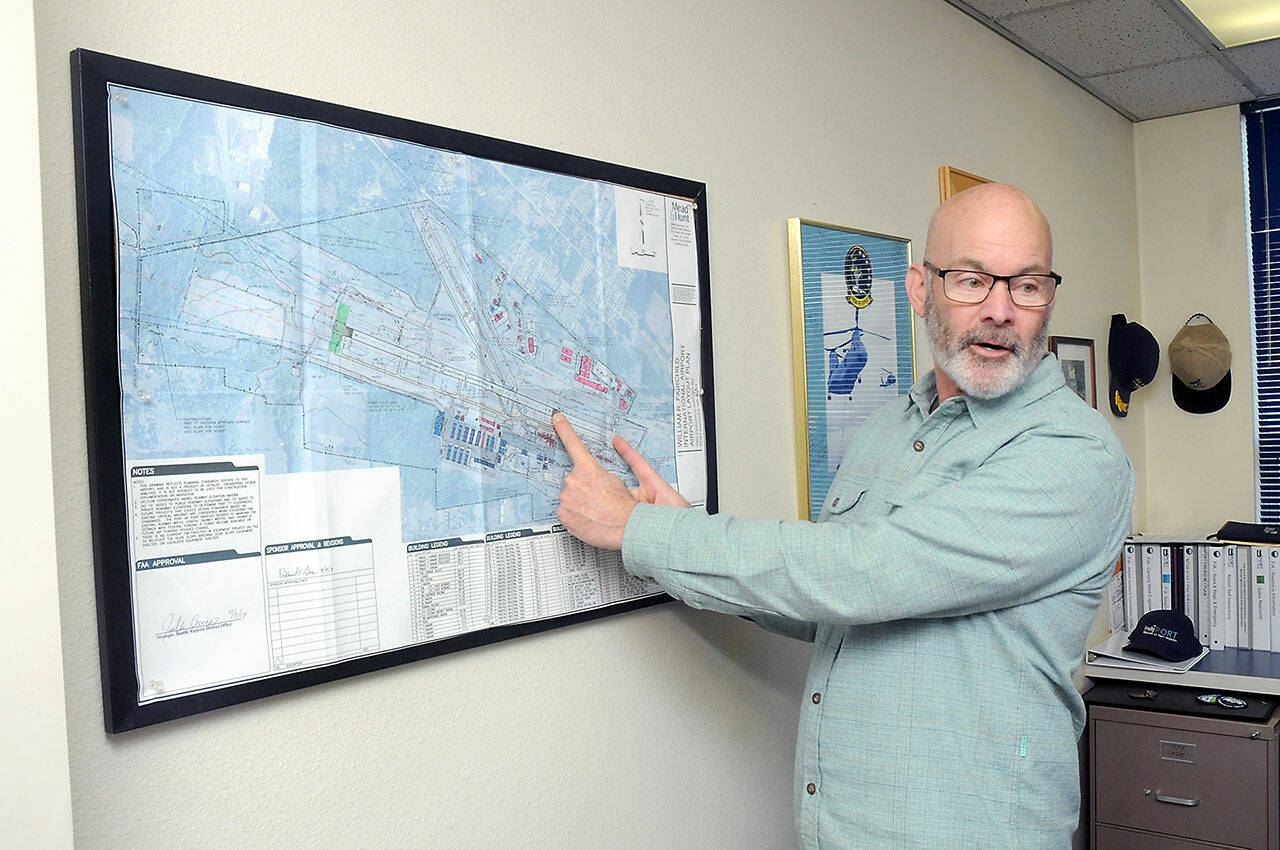PORT ANGELES — William R. Fairchild International Airport has completed a $7.2 million upgrade to its main runway that included replacing the surface, putting in new pavement marking and installing new runway lighting.
And it has installed a new software system to ensure that those who touch down and take off are accounted for.
A $6.3 million grant from the Federal Aviation Administration Airport Improvement Program covered 90 percent of the project and the state Department of Transportation provided $351,210. The Port of Port Angeles contributed $512,246 toward the cost of the Airport Improvement Program portion and a non-funded portion of the runway.
A ribbon cutting will be conducted Dec. 12 at a special port commission meeting held at the airport meeting room inside the terminal, 1402 Fairchild Airport Road from 9 a.m. to 11 a.m.
The $7,185,227 million project involved milling down and replacing the top 4 inches of the old pavement runway, grooving it, repaving and repainting it and replacing the incandescent runway lights with LEDs.
The runway was renumbered from 8/26 to 9/27, and the grass strip along it was graded and reseeded.
The project began on July 7 and ended on time in October. Lakeside Industries and Olympic Electric were the lead contractors.
Airport and Marina Manager Jon Picker said the port was extremely pleased with both companies’ work.
“The project was completed on schedule and there were no major issues,” Picker said.
He said of Lakeside that “the quality of the material going into the project was very high. The material that was removed was recycled to be used on other projects like roads.”
Interruptions to airfield activity were inevitable, Picker said, but the upgrades were necessary.
“We did lose some jet traffic over the summer,” he said. “I think everyone understood what was happening.”
Picker said the FAA conducts thorough and intensive study of runways — such as wind analysis and kind of aircraft the airport typically serves — to decide the width and length it will fund through the Airport Improvement Program. That number for Fairchild was 5,000 feet, even though the runway is 6,300 feet long.
The port paid for the unfunded 1,300-foot-long portion at the east end of the runway to receive new LED lights and paint markings but did not resurface it.
“The port really fought for that 1,300 feet in just in case of a Cascadia event,” Picker said, referring to the possibility of a massive Cascadia Subduction Zone earthquake. “If FEMA rolls in, they have jets, and this is a safety net for the Peninsula.”
The 13/31 runway was not upgraded and will be decommissioned at some point in the future, Picker said.
The FAA is currently working on its own project of replacing the MALSR system (Medium Intensity Approach Light System with Runway Alignment Indicator Lights) at the west end of the airfield.
The port began using the VirTower tracking system in November to monitor airport activity and usage based on signals transmitted by aircraft ADS-B (Automatic Dependent Surveillance–Broadcast) and transponders.
The system provides the port with information on takeoffs, landings, touch-and-gos, type of aircraft and their location, altitude, registration, operator and other details Picker said will help it make better operational decisions. The port pays a fee of $500 a month for the service.
That cost will be likely be recouped by the revenue the port wants to capture by switching to PLANEPASS for its billing. PLANEPASS uses information collected by VirTower to collect fees for airport use. Fairchild does not have a control tower or a way to accurately and systematically monitor aircraft for billing.
It could be particularly difficult to find whom to bill for commercial aircraft, Picker said, and the port did not have enough staff to track down every owner. PLANEPASS did all of that legwork.
“Before this, we used the honor system,” Picker said. “We were losing money for years and years, and now we can finally collect it.”
Picker said the airport was far busier that people realized, particularly in the summer when chartered flights and private aircraft carrying tourists arrived.
The VirTower system will enable the port to show by the hour, day, week or month the level of activity.
The next port projects at the airport will be construction of four new aircraft hangar pads next summer and upgrading taxiway A that runs parallel to the main runway in 2025.
Picker said there is a shortage of hangar space across the state and yearlong waiting lists. The port will own the new hangars, which would have the possibility of accommodating larger aircraft.
It is unlikely the Sekiu Airport will see the kind of improvements Fairchild does, Picker said. It would be highly unlikely to qualify for FAA funding, so the port funds all of its operations. It does so because it considers Sekiu to be an important link to the West End when there are emergencies and disasters, Picker said.
“Life Flight flew over 40 missions there this year, and the Coast Guard uses it,” Picker said.
________
Reporter Paula Hunt can be reached at paula.hunt@peninsuladailynews.com.

